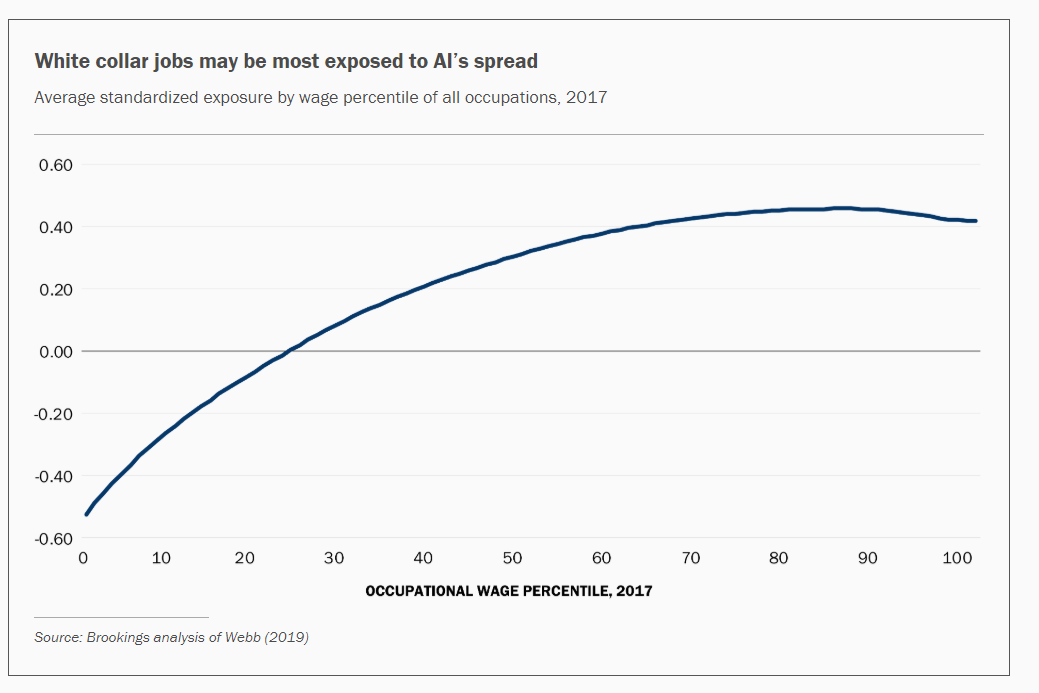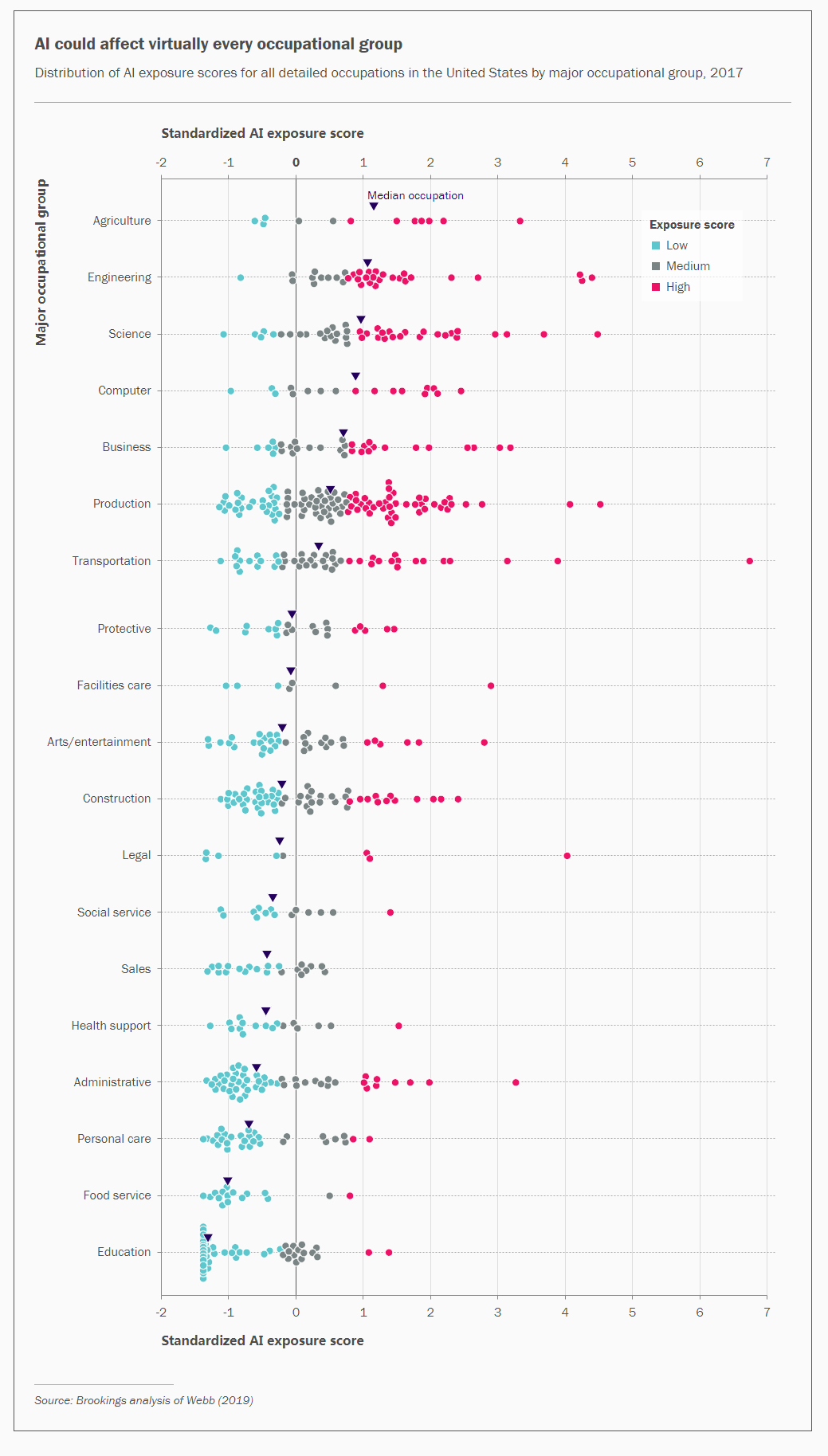/ blockquote>
White-collar jobs (high-paying professionals with a bachelor’s degree) and industrial workers may be the most vulnerable to the impact of AI penetration into the economy
AI affects almost every occupational group. However, although research on automated robotics and software still indicates that lower education and lower paid workers may be the easiest to be replaced, this analysis shows that well-educated, higher-paid employees (as well as manufacturing and Production line workers) are most affected by new AI technologies, but there are some exceptions.
Our analysis shows that employees with graduate or professional degrees are almost four times more likely to be affected by AI than employees with only a high school diploma. From the perspective of education level, those who hold a bachelor’s degree are most affected by AI, which is five times more likely to be affected by AI than workers with only high school education.

High wages are more affected by AI
Analysis—Men who account for a large proportion of technical and professional (and production) roles, are engaged in occupations that are much more affected by AI. At the same time, a large number of women engaged in “interpersonal” education, health care support and personal care services seem to have been sheltered. This is consistent with our earlier analysis of automation.

How much AI is affected by different industries
Large high-tech areas and communities that are heavily involved in manufacturing are likely to encounter the greatest AI disruption
Although AI can be applied almost everywhere, its impact varies, depending on the combination of local industry, education, and occupation. Contrary to the automated sensitivity map, this AI analysis shows that compared with larger and denser urban areas, it is smaller and more biased.